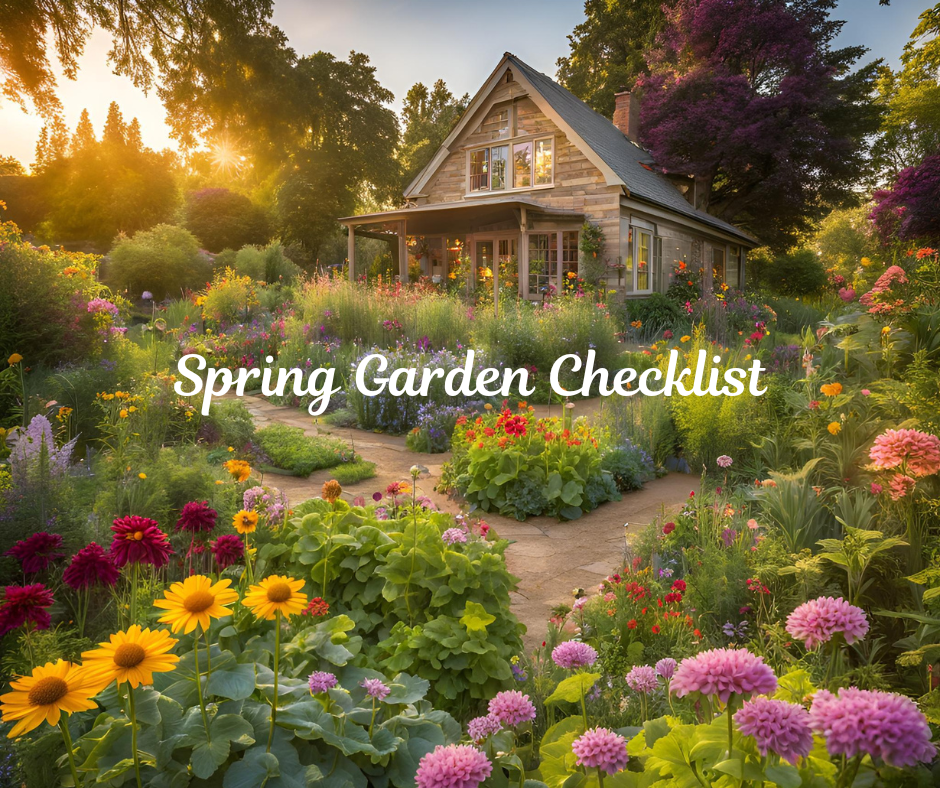
Spring Homesteading Checklist: Preparing Your Garden, Animals, and Land
Spring Homesteading Checklist: Preparing Your Garden, Animals, and Land
Spring is a time of renewal on the homestead, bringing longer days, warmer temperatures, and the perfect opportunity to set the foundation for a productive growing season. Here’s a checklist to ensure your garden, animals, and land are ready for spring.
Garden Preparation
- Plan Your Planting Schedule – Determine which crops to start indoors and which to direct sow in your climate zone.
- Test and Amend Soil – Check soil pH and nutrient levels. Add compost, manure, or organic fertilizers as needed.
- Start Seeds Indoors – Begin seedlings for tomatoes, peppers, and other long-growing season crops.
- Prepare Garden Beds – Clear debris, pull weeds, and turn over the soil to aerate.
- Prune Perennials – Trim back fruit trees, berry bushes, and other perennials before they start new growth.
- Set Up Irrigation Systems – Check hoses, drip irrigation, or rainwater collection systems for leaks or damage.
- Mulch Garden Beds – Lay mulch around perennials and in garden beds to suppress weeds and retain moisture.
- Check Tools and Equipment – Clean and sharpen garden tools, repair broken handles, and ensure machinery is in working order.
Animal Care
- Assess Winter Damage – Inspect barns, coops, and fencing for needed repairs.
- Spring Health Checkups – Schedule vaccinations, deworming, and hoof trimming for livestock.
- Clean and Sanitize Animal Housing – Remove old bedding, deep-clean stalls, and replenish fresh straw or shavings.
- Adjust Feeding Programs – Transition livestock to fresh pasture or adjust feed to meet seasonal needs.
- Prepare for New Additions – If planning to raise chicks, lambs, or goat kids, set up brooders or birthing areas.
- Inspect Beehives – Check for hive health, food stores, and signs of disease.
- Stock Up on Supplies – Ensure a good supply of feed, minerals, and veterinary essentials.
Land and Infrastructure
- Inspect Fences and Gates – Walk fence lines, replace broken posts, and secure any weak spots.
- Clear Winter Debris – Remove fallen branches, leaves, and other debris from pastures and pathways.
- Maintain Water Sources – Check wells, ponds, or rainwater collection tanks to ensure adequate and clean water supply.
- Plan Pasture Management – Rotate grazing areas and overseed pastures if necessary.
- Set Up Composting – Start new compost piles and turn over existing ones for nutrient-rich soil amendments.
- Prepare Equipment and Vehicles – Change oil, check tires, and service tractors, mowers, and other homesteading equipment.
- Enhance Pollinator Habitats – Plant wildflowers, provide water sources, and minimize pesticide use to support bees and butterflies.
Spring is a busy but rewarding season for homesteaders. By tackling these essential tasks early, you’ll set yourself up for a productive and thriving year ahead. Happy homesteading!
